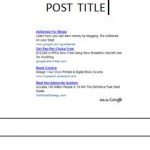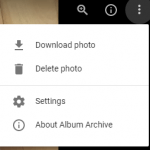According to Blogger Buzz:
The new version of Blogger is metaphorically bursting with features, from the big guns like drag-and-drop template editing and post labels (which are perfect, by the way, for indexing the 131 historical figures you may have written about), to little polishes like a better-designed Dashboard or that you no longer need to solve a word verification CAPTCHA to post a comment on your own blog.
We’re excited about the new version of Blogger, both for what it can do now (which also includes access control for blogs and better input fields for post dates) and what we’ll add to it in the future, now that we have a new, stable, powerful infrastructure to work with. We’re done with “beta,” but we’re far from done with the new Blogger.
Some of the noted features include:
- All Blogger accounts and blogs now integrated with the free Google Account after switching from old Blogger.
- Ability to tag posts with multiple keywords known as labels, which is called categories in other blogging platform.
- New privacy settings that restrict readership to a predetermined audience. They can set the blogs private so that only accessible by blogger themselves only, or public for everyone, or only allow users with pre-approved e-mail addresses registered in Google Account to access and browse the blogs. Those without Google Account will need to be relisted every two weeks.
- Flexibility in customizing layout by enabling drag and drop positioning of most elements on the page with more options available for colors, fonts, headers, and the sidebar, thus eliminating the need to know HTML and CSS (Cascading Style Sheets).
- Multiple authors.
- Faster or instant publishing and publication of new posts as the blogs are now constructed dynamically. No longer a need to republish.
- More feed options such as new feed for all the comments on your blog, individual feeds for all the comments on each separate post, and support for the RSS 2.0 and Atom 1.0 standards.
- Updated Dashboard.
- Improved server performance, as now hosted on Google servers.
All Blogger accounts will gradually be converted and switched over to Google Account in order to take advantage of the new and improved features. You will be offered an option to switch to New Blogger if you’re still using Old Blogger and slot is available. If you haven’t switch, you will need to click on Old Blogger to login to your Blogger accounts on login page. Else, you can always login to your Google Accounts or click on New Blogger to login to access Blogger Dashboard.
If you haven’t been offered an option to convert or switch in your Old Blogger Dashboard, you may see a button named Switch Now if you’re lucky enough to enable to you immediately switch over to New Blogger platform. However, you need to logout first and go to the login page to check it out.





